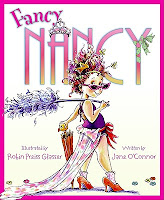"I spent 10 minutes walking back and forth, waving my hands and orchestrating, addicted."
—Dave Barton, OC Weekly
Biennial Artist: Nina Waisman
Nina Waisman is a new-media artist based in San Diego. Often situated in transitional public spaces, her site-specific, interactive installations explore the relationship between the body and physical space and place. Her installation Between Bodies/Tijuana, as Waisman explains, “uses technology to connect visitors’ gestures to everyday work and play sound-gestures, recorded throughout Tijuana, focusing on aspects of richly layered lives that are not being portrayed by mass media.” The piece has a similar sonic structure as a theremin—the position of the visitor’s body within the museum interacts and shifts the pitch, speed, and volume of the emanating city sounds of Tijuana, establishing a gestural and sonic dialog between the two locations.
Sounds from the streets of Tijuana include:
Border gates (pedestrian entrance into Tijuana)
Taxi drivers calling for fares on Revolución
Wind chimes for sale near Revolución
Filing devalued coins into pricier tourist mementos on Revolución
Bike-horn used to advertise sweet ices to passers-by on Revolución
Street musicians playing Fara-Fara for market-goers near Revolución
Making tortillas in a corner restaurant on the way to 5 Y 10
Die-cutting cardboard for packaging in Colonia Chilpancingo
Typing online reports of toxic manufacturing practices in Chilpancingo-based factories (these factories produce consumer items for the US market)
Pushcart salesman calling for ice cream sales in residential streets of Colonia Chilpancingo
Raking up street rubble to prevent it being thrown by cars at pedestrians in Los Laureles
Hammering repairs on improvisational housing in Los Laureles
Jump-roping girls on the street of Los Laureles
Boys and men digging a ditch along the street in Los Laureles
Children riding tricycles and bikes in circles outside their homes in Los Laureles
Norteño music played in a street market in ejido Maclovio Rojas
Car-mounted advertising playing through the streets of Maclovio Rojas
Telecommunicating via dial-up (volunteers in community-run government offices in Maclovio Rojas seeking basic services and constitutionally-granted title to community land, in the face of global corporations’ attempts to privately acquire this land)
Ice cream truck heard throughout the streets of Maclovio Rojas
Children working in the market in Maclovio Rojas
Bike bells advertising push-cart sales
Roosters raised for cockfights
Military helicopters
Police sirens
Footsteps
Wind
Birds









